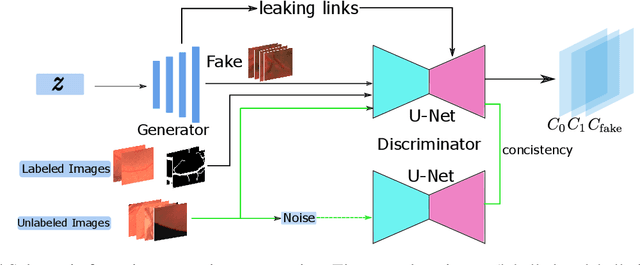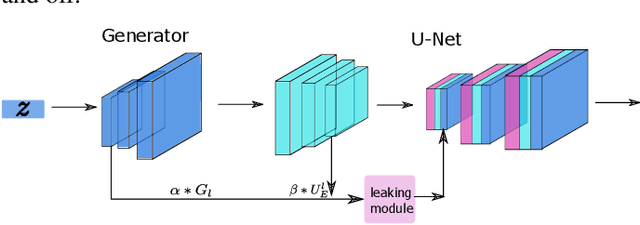Semi-Supervised Semantic Segmentation of Vessel Images using Leaking Perturbations
Paper and Code
Oct 22, 2021



Semantic segmentation based on deep learning methods can attain appealing accuracy provided large amounts of annotated samples. However, it remains a challenging task when only limited labelled data are available, which is especially common in medical imaging. In this paper, we propose to use Leaking GAN, a GAN-based semi-supervised architecture for retina vessel semantic segmentation. Our key idea is to pollute the discriminator by leaking information from the generator. This leads to more moderate generations that benefit the training of GAN. As a result, the unlabelled examples can be better utilized to boost the learning of the discriminator, which eventually leads to stronger classification performance. In addition, to overcome the variations in medical images, the mean-teacher mechanism is utilized as an auxiliary regularization of the discriminator. Further, we modify the focal loss to fit it as the consistency objective for mean-teacher regularizer. Extensive experiments demonstrate that the Leaking GAN framework achieves competitive performance compared to the state-of-the-art methods when evaluated on benchmark datasets including DRIVE, STARE and CHASE\_DB1, using as few as 8 labelled images in the semi-supervised setting. It also outperforms existing algorithms on cross-domain segmentation tasks.
 Add to Chrome
Add to Chrome Add to Firefox
Add to Firefox Add to Edge
Add to Edge